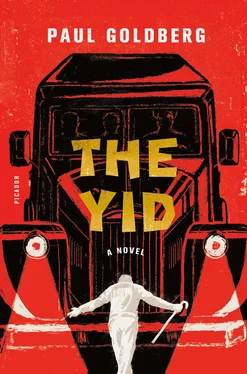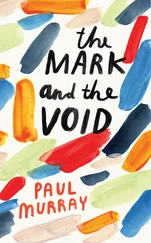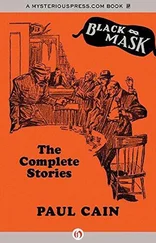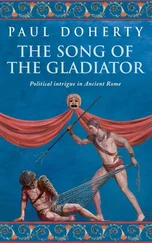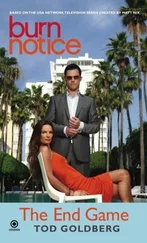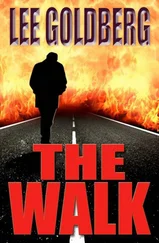“Your choice,” says the tall nosed one, though everyone knows that nothing can be further from the truth. Kent has no choices left, nor do his captors.
LEWIS: Aleksandr Sergeyevich, are you up to intellectual discourse?
KOGAN: I am alive.
LEWIS: In America, we have something called minstrel shows. You’ve heard of them?
KOGAN: I haven’t.
LEWIS: In minstrel shows, white men paint their faces black, and make foolery, pretending to be Negroes.
KOGAN: I think I read this in Mark Twain. Refresh my memory. What’s their purpose?
LEWIS: To show that we are monkeys with bigger penises, but smaller brains than humans.
KOGAN: Fascism, then.
LEWIS: A form of Fascism. Yes. Now, Aleksandr Sergeyevich, do you recall the photo of der komandir , standing on his head, wearing tefillin?
KOGAN: Yes. It was in 1921. He was demobilized, his wounds were mending, and he was stronger than an ape. The play was called An Evening of Sholem Aleichem. A madman, Marc Chagall, designed the props and costumes. It was cubism, madness cubed. Biomechanics. Futurism. Jarring noises. I loved those days!
LEWIS: I’ve seen the photos from that time; sometimes the actors wore nose masks, exaggerating their already substantial beaks …
KOGAN: But that was cubism, nothing else.
LEWIS: And our minstrel shows? Are they about paint?
KOGAN: I see your point. I’ll help you drive it home. Shortly after Levinson stood on his head in leotard and tefillin, Zuskin put tefillin on his legs and wore a dress. With this, he pranced onstage.
LEWIS: Did you laugh?
KOGAN: I laughed until I cried! In 1926—when you were very young, and living in your Omaha — the theater staged 137 Children’s Homes . A wooden play, where Mikhoels portrayed a man named Shindel, the villain. This Shindel hid contraband in … guess.
LEWIS: His tefillin?
KOGAN: Correct.
LEWIS: It’s a strange object of fixation.
KOGAN: I wish I had tefillin for you to test. You put one box on your head. Symbolically, this binds your intellect to God. You put the other box on your left arm. You loop the thin belt of the tefillin seven times around the arm, and then three times around the middle finger. This represents your heart and soul. All men must do it. This is in the Torah.
LEWIS: What is the text inside?
KOGAN: Two little portions about consecrating firstborn sons in honor of the Exodus, and the Shema. You know Shema …
LEWIS: Hear, O Israel, the Lord our God, the Lord is one.
KOGAN: There is a little more, but that’s the highlight. Hilarious. Let’s take this step by step: if you love God, it’s a good thing to bind yourself to Him with tefillin. But if you question God, the tefillin and the bond it represents become more onerous than a bad marriage. Next step: if you believe religion has to wither, and with it, your farkakte shtetl, you may take aim at the ties that bind — symbolically — God and man. And that’s the tefillin! Simple.
LEWIS: The shtetels are gone, Aleksandr Sergeyevich.
KOGAN: Destroyed by Hitler, not by GOSET. And tefillin’s now filin, an owl, which, for some reason, is sought by thugs.
LEWIS: Does this surprise you? When you desecrate the tefillin onstage, breaking with God in ways that are intense, and personal, and public, the rest of us are left outside. All we can hear is something about a filin, and something else about contraband, and jewels. Let me return to our minstrels. They envy our cocks, and when they’re done performing, they go lynch a nigger.
KOGAN: And our players loathed the shtetl, tradition, family, and God. They were illuminati in cubist masks and skirts, mit upside-down tefillin on their legs.
LEWIS: They played the minstrels and the Negroes lynched.
KOGAN: That’s Jewish luck. But what do you propose? How should we settle our grievances with God? Discreetly? Privately? Like Swedes or icy Anglo-Saxons? Can you propose weapons and a venue?
* * *
As Bul’dog raises his gun, Kent knows the end has come.
The words he needs are in his throat, and he lets them out fast: “You can kill me now. But you can’t kill everyone!”
A hero of some sort said something like this. Poor Kent lacks the memory for who and what and when.
“We certainly can kill you now,” Komandir says. “You were about to murder Kogan, and you may have killed Kuznets and those two women.”
He nods to Bul’dog.
Before Kent’s body slumps to the floor, Levinson feels an instinctive urge to wipe warm liquid off his left cheek and forehead. Could that be Kent’s blood? It is, in fact, Kent’s spit. Defiant to the end, he has become a fitting heir to both Matrosov and the German gunner who manned the pillbox.
Inside the house, Kogan and Lewis hear a muffled gunshot.
“They killed the boy.” Lewis cringes.
“ Komandir Levinson would call it an execution,” says Kogan. “Old tactics never wither.”
“I call it murder. Thank God I’m not der komandir. ”
On the afternoon of February 27, Ol’ga Fyodorovna resolves to pack her prerevolutionary leather valise.
Nearing sixty, she has the wisdom of a woman who has outlived most of her lovers. Until her postwar detour — an exploration of the Jews — she limited her amorous pursuits to Russian poets.
They never left her fully, and their final moments were poetry as well: Nikolay, daring the firing squad to set his soul aloft; Marina, hopeless and hungry, her neck in the noose.
They died in prisons, revolutions, wars, and famines; by hanging and by the despair that comes with driving taxis on Paris boulevards and selling insurance in New Jersey. They vanished, but she stood guard over the remnants of the beauty that once inspired them. It was elegance, really, the spare beauty of a girl petite and willowy at once.
Her grace is still intact, as is her strength. The low-slung bangs are there, too, still patent-leather-black and straight as wire. They now caress her thick and graying brows.
Her room is about symbols of beauty as well: a round white dining table is Biedermeier, a palatial treasure she found discarded in revolutionary Petrograd. The mirrored armoire is white, as are the walls, the sofa, and the sheer curtains. The bentwood chairs her parents brought from Prague before the revolution are bleached with age, but sturdy still. She owns one vase, a set of white plates, clear simple glasses, and absolutely no china figurines.
There is a charcoal drawing on the wall: a willowy young woman with razor-straight bangs, nude, reclining on a draped divan. Where is the boy for whom she posed? The gold mines of Magadan, the bogs of Narva, or the Auschwitz sky?
On the afternoon of February 27, Ol’ga Fyodorovna performs an act for which she is famous.
She leaves.
* * *
A bloodstain is the first thing Kima sees when she passes through Kogan’s gate. The tears cease as suddenly as they begin, and only her red eyes and the bags that swell beneath them bespeak the awakening of grief that gripped her during the night.
She hears a gunshot, and sadness is instantly replaced with the steely comfort of mortal danger.
Instead of lurking in the bushes to gather information and taking a calculated risk, she runs toward Kogan’s house.
“A gunshot!” she shouts, bursting through the door, and, to her relief, she finds Kogan and Lewis in what appears to be a calm conversation.
“I am afraid so,” says Lewis, looking up.
“Who?”
“Levinson killed a thug.”
“Aleksandr Sergeyevich, what happened?”
“I was beat up. They came to kill me.”
Читать дальше
